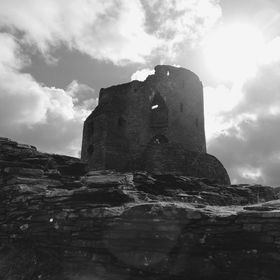Offf grid camping in north Western Australia. Touring Australia with a caravan is a great way to travel comfortably. Far away from the city lights, stargazing o...
Read more
Offf grid camping in north Western Australia. Touring Australia with a caravan is a great way to travel comfortably. Far away from the city lights, stargazing opportunities are on another level.
Read less
Read less
Views
123
Likes
Awards
Top Pick 2023
Same photographer See allBehind The Lens
Behind The Lens
Location
Living on the road and travelling Australia full time we camp at some amazing off-grid locations like this site at Point Quobba in northern Western Australia.Time
I use an app called Stellarium to plan and time my night photography. The app is location specific and gives real time directional information on all celestial objects including our own galaxy, the Milky Way.Lighting
I wanted to keep this shot as dark as possible but I do sometimes use a camping lantern(incandescent) or a led red or white head torch to add model lighting to foreground subjects. Space and weight considerations are important when travelling in a caravan so I keep my kit to a minimum.Equipment
Canon EOS 60D, Sigma EX 10-20mm and a Giottos travel tripod which is sturdy enough and packs down enough to stow in an overhead cupboard in the caravan.Inspiration
There is so little light pollution in outback Australia and in the "Top End" during dry season(winter) clear, star filled skies are almost guaranteed nightly.Editing
None, single frame, I prefer more natural, naked eye type night sky images. Many astrophotographers, use stacking to reduce noise from higher ISO settings, or to over expose and bring out more colour and contrast than would normally be visible to the naked eye.In my camera bag
I have a GoPro, two DSLRs; one a standard EOS 60D, and an infrared conversion EOS 600D. My Sigma is the go to night photography lens as it is wide and relatively fast. I have a 17-40 F4L which works well on the IR conversion particularly as it doesnt produce hot spots. Other than my little travel tripod thats about it. My mobile phone is always in my pocket and probably gets more use than anything else..Feedback
500 rule to calculate maximum exposure times to avoid star trails, unless thats what you want to capture of course. Wide angle, and widest apeture, manual focus a little shy of infinity if your lens has a scale. Use incandescent WB, or equivalent colour temperature. Highish ISO. Timer delay of a couple of seconds or remote release. If you buy a remote release specifically for this kind of thing get one with an intervalometer so you can do star trails..



























